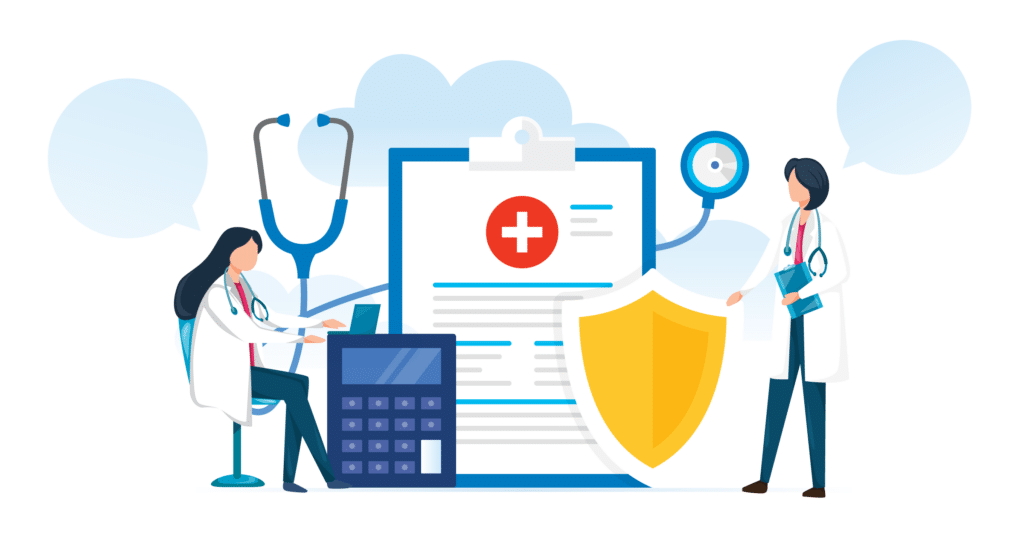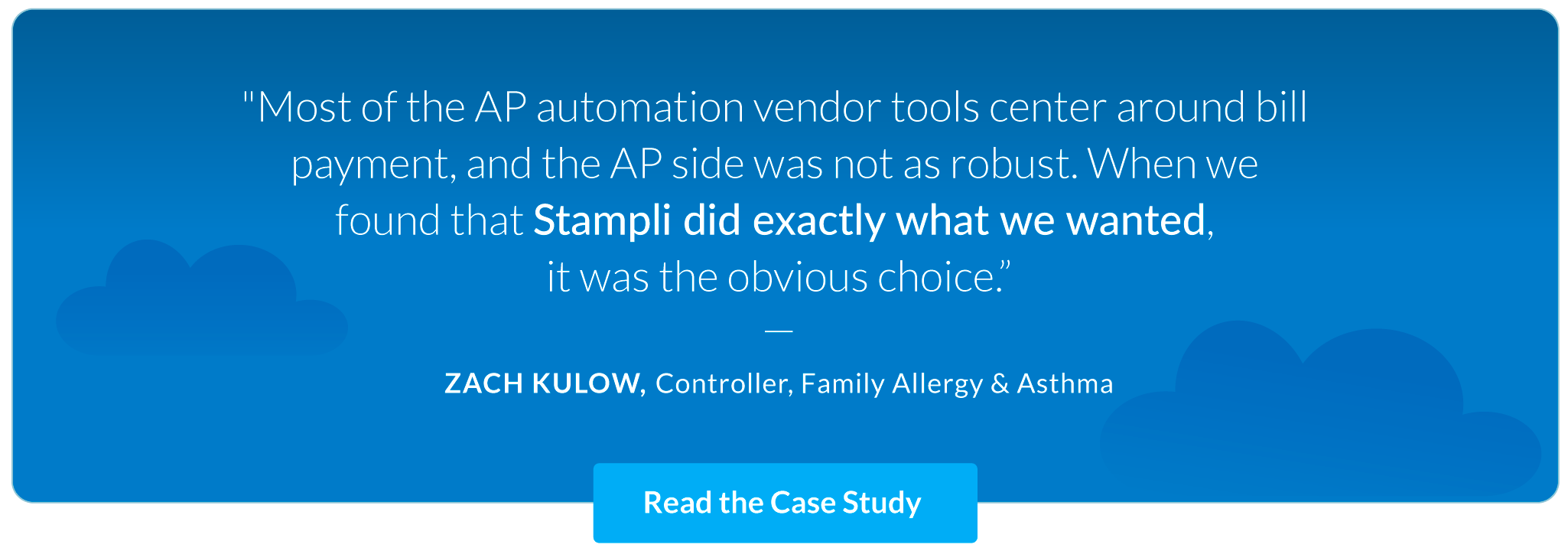AP Automation for Medical Facilities’ Regulatory Compliance

The need for medical facilities is growing rapidly, and a number of factors are creating change in the health care industry. Simultaneously, medical facilities must navigate the complexities of maintaining regulatory compliance. I recently read Becker’s 2023 Hospital CFO Report, and it got me thinking about accounts payable’s contribution to regulatory compliance:
- Higher labor costs: “Hospital employee expenses are expected to increase $57 billion from 2021 to 2022, with contract labor ballooning another $29 billion.”
- Move toward remote services: “Sixty-three percent of physicians worldwide expect most consultations to be performed remotely within 10 years. About 40 percent of health centers are using remote patient monitoring today.”
- Better financial experiences: “Sixty-one percent of consumers said that ease of making payments is important in decisions to continue seeing a physician.”
What does all this mean? Well, the cost to provide services is increasing (higher labor costs) and the method that services are delivered is moving online. When these two changes occur at once, it’s a big disruption to any business. Now add in regulatory compliance.
The health care industry as a whole is subject to numerous regulations related to patient privacy, safety, and quality of care. Failing to comply with these regulations can result in penalties, legal liability, and reputational damage. Many small operators can’t afford the cost of regulation, and these firms may be forced to find a buyer or close their doors.
To illustrate the challenges that medical facilities experience when it comes to regulatory compliance and how they’re overcoming said challenges, we’ll introduce you to a hypothetical situation with Lisa, the CFO of Patient First Clinics, a medical practice with 10 clinic locations and 60 physicians.
In this article, I’ll highlight how Lisa’s medical practice is experiencing rapid change, her regulatory compliance challenges, and how Stampli‘s accounts payable (AP) automation solution is helping her practice remain compliant in times of change and growth.
Regulatory & compliance challenges medical facilities are facing
CFOs must keep a number of balls in the air to manage costs, generate a profit, and to comply with regulatory requirements. It can be a challenge, and there is currently a shortage of qualified CFOs who can manage it all effectively.
Patient First Clinics must comply with compliance issues related to HIPAA, OSHA, Medicare/Medicaid, and FDA, just to name a few off the top of my head. If the CFO drops the ball, the firm is subject to fines, penalties, and other legal issues.
If you’re not familiar with Stampli, the company is an AI-powered AP automation solution. It brings all AP-related communication, documentation, and workflows into one place. By leveraging Stampli’s AP automation solution, medical facilities can ensure accuracy and completeness of invoice processing and payment information, reduce errors and inconsistencies, and improve efficiency.
Protecting patient data
HIPAA requires medical facilities to implement administrative, physical, and technical safeguards to ensure the confidentiality, integrity, and availability of electronic protected health information (ePHI).
If you’ve spent time in a hospital, or visited a patient recently, you may have noticed the amount of time and effort spent to protect patient data. This requirement keeps CFOs up at night, because patients are the number one priority, and health care businesses must protect their medical records.
Here’s how Stampli’s AP automation addresses HIPAA compliance for medical facilities:
- Stampli provides encryption and stores all invoices and payment information securely in the cloud.
- Stampli offers role-based access controls, so only authorized personnel can view or edit sensitive data, which helps medical facilities meet the technical safeguards required by HIPAA.
- With Stampli, there’s a complete audit trail of all invoice and payment activities, including approvals, rejections, and modifications, which helps meet the administrative safeguards required by HIPAA.
The management team can easily pull reports for any type of audit that must be conducted, saving you hours of time and effort. With the automation available today, there’s simply no excuse for keeping paper files that can be lost or stolen.
Maintaining a safe work environment
In addition to patients, the health and safety of medical staff is a vital concern. Every medical professional is dealing with the demands of providing patient care, while also keeping the workplace safe.
There’s a need for talented people to provide great patient care, and the coronavirus pandemic put a renewed focus on safety in medical facilities. OSHA requires medical facilities to provide a safe working environment for their employees, which includes providing appropriate training, equipment, and protective gear, as well as complying with regulations related to exposure to hazardous materials and infectious diseases.
How does Stampli help?
Stampli provides an automated AP solution that moved Lisa’s medical practice away from manual tasks.
Her staff isn’t bogged down with manual coding, emailing attachments, and chasing down approvers. Automation frees up more time for training and other activities that help ensure compliance with OSHA regulations.
Another challenge Lisa’s practice faces is when it comes to gathering documentation needed to bill for their services. A medical facility may bill dozens of entities, and two of the largest are Medicare and Medicaid. Similar to Lisa’s challenges, it’s not uncommon for home health care facilities to bill over 70 different entities for medical services.
Gathering records for faster, more accurate billing
Medical facilities that participate in the Medicare and Medicaid programs must comply with a variety of regulations related to billing, coding, and documentation. I’ve found that poor record keeping results in incorrect billings, delays in payments, and cash flow issues.
Furthermore, I have discovered that AP automation not only saves time for medical facilities such as Patient First Clinics but also enhances accuracy. Allow me to elaborate on how this is achieved with Stampli:
- Stampli’s AI-powered automation, Billy the Bot™, quickly learns how an AP process works, in order to automate the most time-consuming activities, including invoice capture, coding, approvals, and fraud detection.
- AP Automation reduces errors and inconsistencies in billing and documentation processes, ensuring accuracy and completeness of all invoices and payments.
- Medicare or Medicaid billing is accurate and compliant, thus increasing the assurance of timely payment.
Medical facilities like Lisa’s avoids billing problems by using Stampli, and they maintain healthy cash inflows. I say this because they are now able to gather records quickly, spend less time on billing, and collect payments faster. As a result, this minimizes their accounts receivable balance, which is an important cash management strategy.
Other compliance requirements
Let’s explore two additional compliance issues that Stampli’s AP solution helps medical facilities manage effectively:
- FDA: Medical facilities dispense drugs and use medical devices for patient care. The Food and Drug Administration requires the facilities to keep records, report adverse events, and to follow labeling requirements.
- State and Local Regulations: They must comply with state and local regulations related to licensing, certification, and accreditation of doctors, nurses, and other professionals.
Stampli’s automation makes AP record keeping and reporting much easier as it’s one central location for medical facilities to communicate, securely store supporting documents, and manage AP workflows. Moreover, Stampli provides control and visibility into all invoice processes, and provides an auditable trail of all activities to ensure compliance.
The Stampli solution
As a finance professional myself, I understand the challenges CFOs face when it comes to containing costs without sacrificing patient care. That’s the difficult balance of being a CFO. If you reduce costs too much, your business can’t effectively serve customers.
On the other hand, Stampli’s AP Automation eliminates manual tasks, which enables teams to process more invoices in less time. This provides staff with more time to work on tasks that add more value, which increases profitability and employee morale. Stampli also reduces the risk of billing errors and inconsistencies, which helps businesses avoid costly penalties and fines.
Cyberattacks are another big concern, because a data breach may prevent medical facilities from doing business and more importantly, providing patient care. Fortunately, Stampli securely stores data, documents, and information, and has medical facilities covered.
This is because invoices and payment information are encrypted and securely stored in the cloud. By offering role-based access controls, only authorized personnel can view or edit sensitive data, meeting technical safeguards required by regulations. CFOs in medical practices, including Lisa’s, have a crucial responsibility to establish and maintain trust with both patients and vendors. Stampli plays a vital role in upholding this trust with their stakeholders.
A common trend I’ve seen among medical practices is their objective of expansion through the acquisition of other businesses. When it comes to incorporating a new company into their operations, Stampli’s AP Automation solution enables the smooth transition of AP processes when it comes to mergers and acquisitions. This because Stampli supports multiple sites, and that’s no matter the number of separate books or ERPs involved.
Stampli is for accounts payable teams that want the efficiency of automation, but don’t want to rework their ERP or change their existing AP processes. Unlike other solutions, Stampli provides full support for the full range of native functionality for more than 70 ERPs — enabling them to deploy in a matter of weeks, not months, with no disruption to your business.
Discover how Stampli has helped medical facilities like yours navigate times of growth and regulatory compliance in our Family Allergy & Asthma customer success story.
Convinced already? Contact Stampli to automate AP and start managing regulatory compliance issues with confidence.

